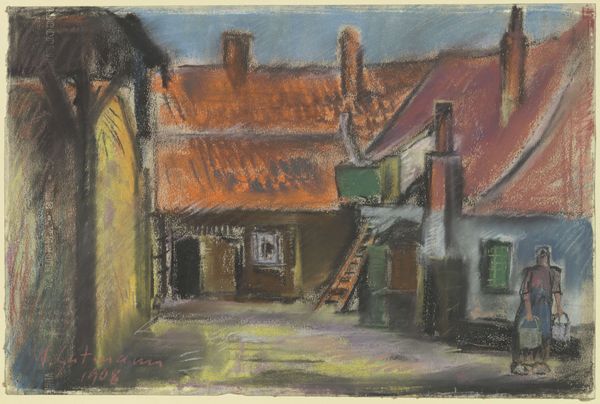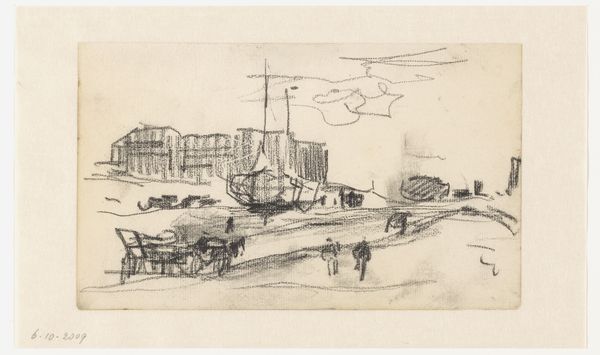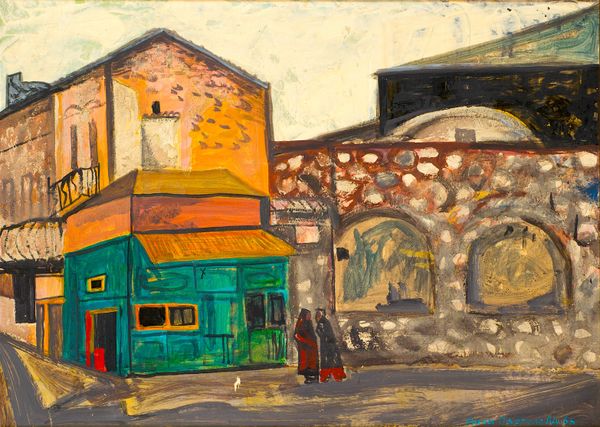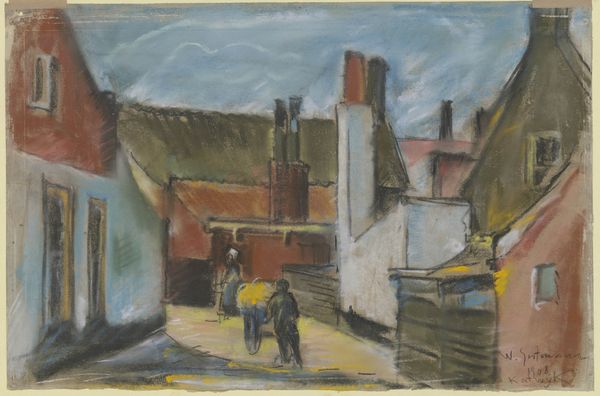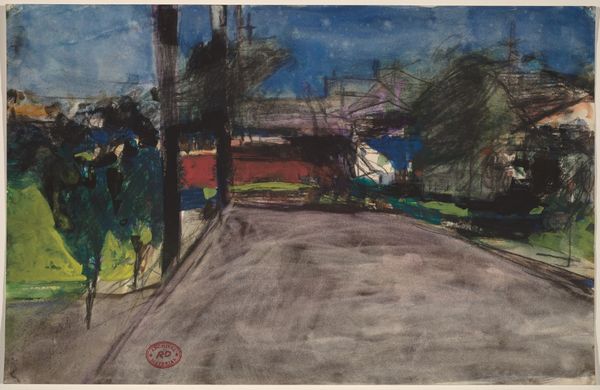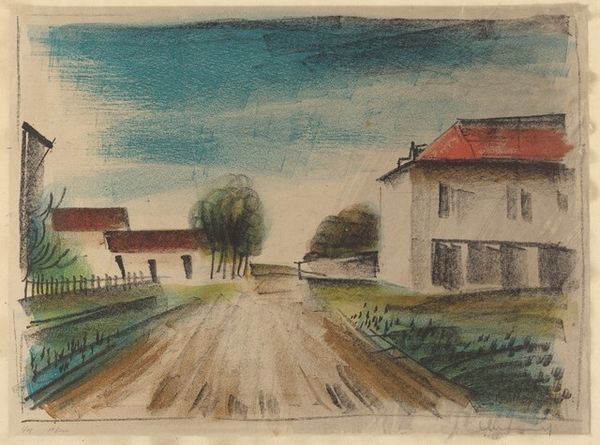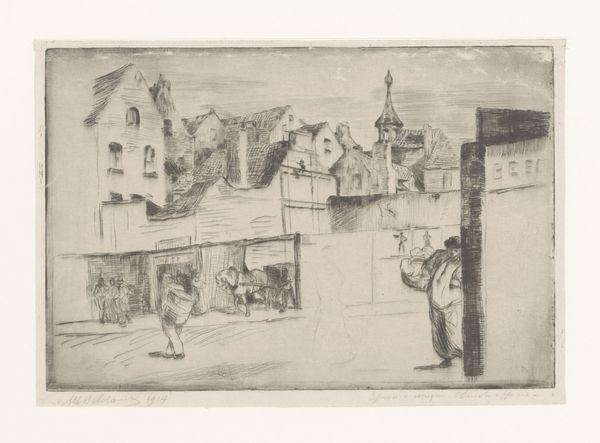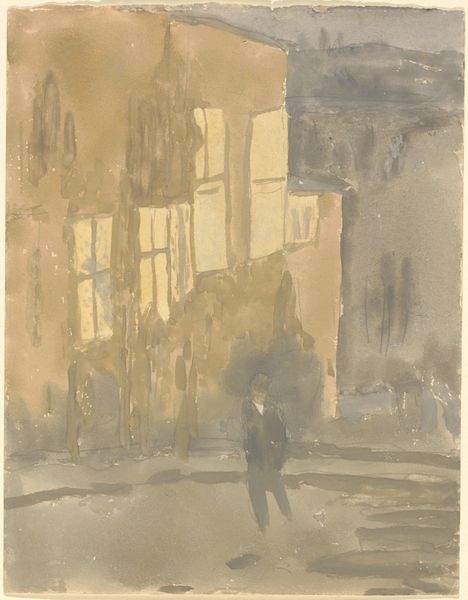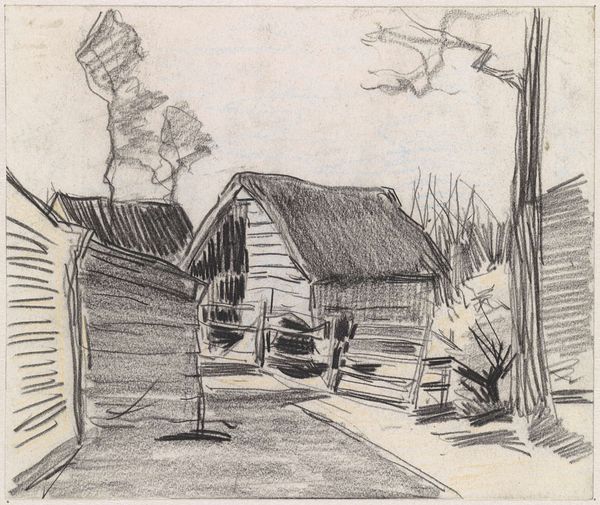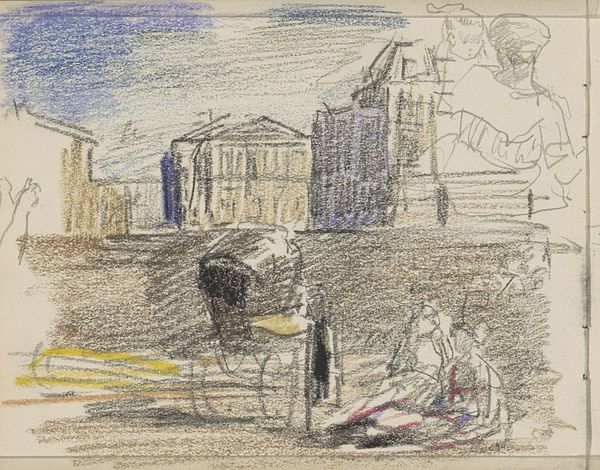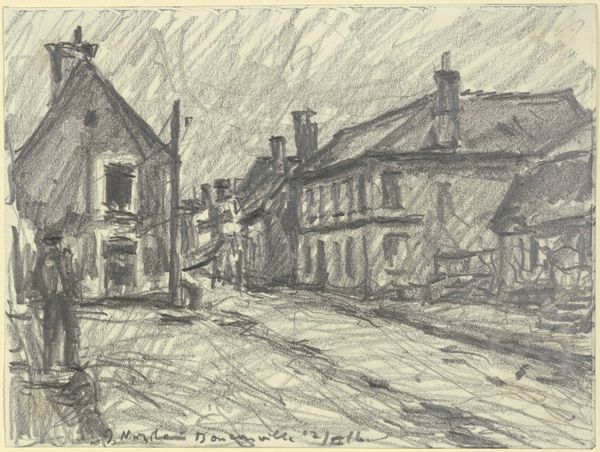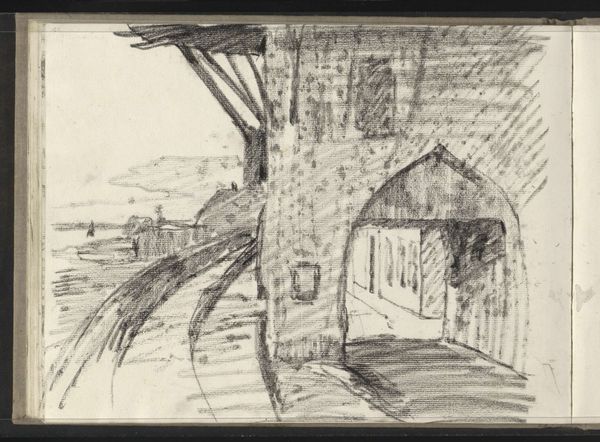
Copyright: Public Domain
Curator: We're looking at Wilhelm Gutmann's "Street in Katwijk" from 1908, a drawing rendered in coloured pencil on paper, now residing here at the Städel Museum. Editor: It’s quite somber, isn’t it? The limited palette and indistinct forms lend the piece a melancholy feel. The muted tones, browns, and grays dominate the cityscape. Curator: Indeed, the restricted use of colour serves to accentuate the structural composition. Notice how Gutmann employs subtle shifts in value to delineate forms, foregoing stark lines for a more atmospheric effect. The drawing exhibits clear formal organization using planar recession and the implied orthogonal lines converging to a point somewhere slightly above the horizon. Editor: And I am drawn to the figures placed within that perspective. They seem symbolic, almost like archetypes populating the collective unconscious. These townsfolk walking in this coastal town speak to something deeply rooted, perhaps the daily routine and a simple sense of belonging, or even isolation depending on your view. It’s very potent. Curator: Undoubtedly, one can engage in an interpretive act attributing archetypes within this artwork, but one cannot escape that those meanings come from a context extrinsic to the visual forms and material techniques that compose the artwork. Consider that the loose handling of the medium is as equally potent to any imagined narrative we conjure for ourselves. Editor: Fair, but art transcends pure form and materiality, I’d argue. In this instance, Gutmann isn't just recording what’s in front of him. His street feels laden with an underlying emotional reality. Perhaps it's the memory of this scene reconfigured through his psyche. This all imbues the work with a timeless quality. Curator: Whether or not that psychological impact comes from intended semiotic meaning or from a purely optical phenomenon—I admit the work is strangely engaging. Editor: I concur; Gutmann’s "Street in Katwijk" is a subtle yet compelling interplay of artistic intent, cultural encoding, and emotional resonance.
Comments
No comments
Be the first to comment and join the conversation on the ultimate creative platform.
